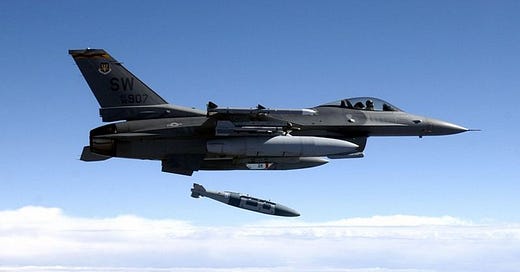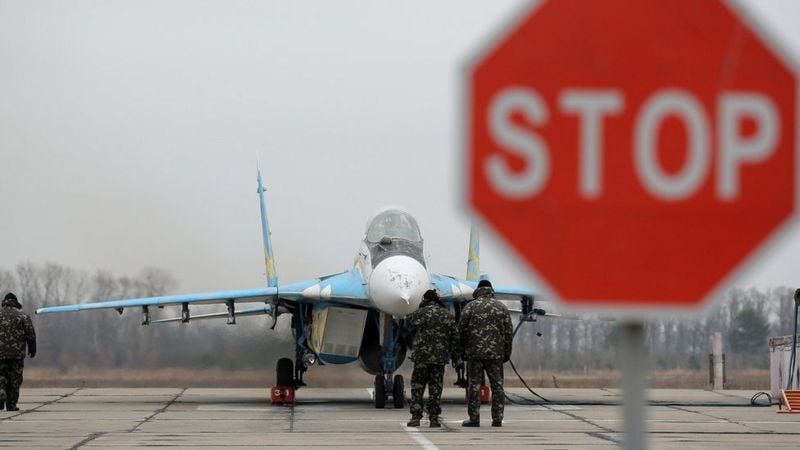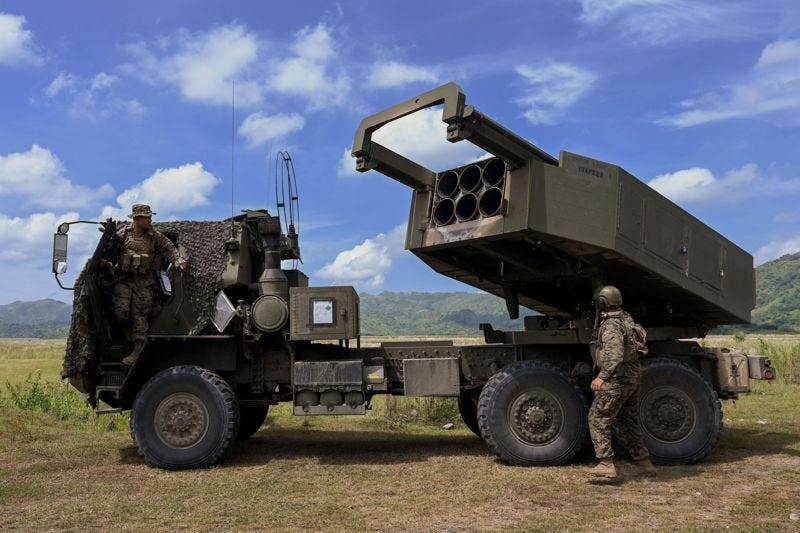Can air forces play a bigger role and turn the tide in the war in Ukraine?
Ukraine had been pushing for modern fighter jets which it considers a main element for a successful counteroffensive against Russian forces. But what will happen if Ukraine gets them?
By Pavel Aksenov, Defense Correspondent
Ukraine has for a long time been requesting modern military aircraft from its Western partners, especially now, as Kyiv gears up for a counteroffensive. Many military bloggers in Russia warn that Ukraine’s modern air force could make Moscow troops holding onto occupied territories much more difficult.
For many, the air force seems to be a ‘silver bullet’, a miracle weapon capable of changing the course of the war. Indeed, there have been wars in recent history in which aircraft have played a decisive role.
During the first Gulf war, on February 27, 1991, American fighter jets attacked Iraqi military convoys retreating from Kuwait along two highways. Hundreds of military vehicles were destroyed, with images of mangled equipment and bodies of Iraqi soldiers giving it a name the "Highway of Death”.
NATO air campaigns in Yugoslavia and Libya, as well as the Russian operation in Syria in the last decades, have only strengthened the image of military aviation seemingly being capable of bringing victory closer, if not an outright solution to the conflict.
The Russian invasion of Ukraine was the first war in which this image was tarnished.
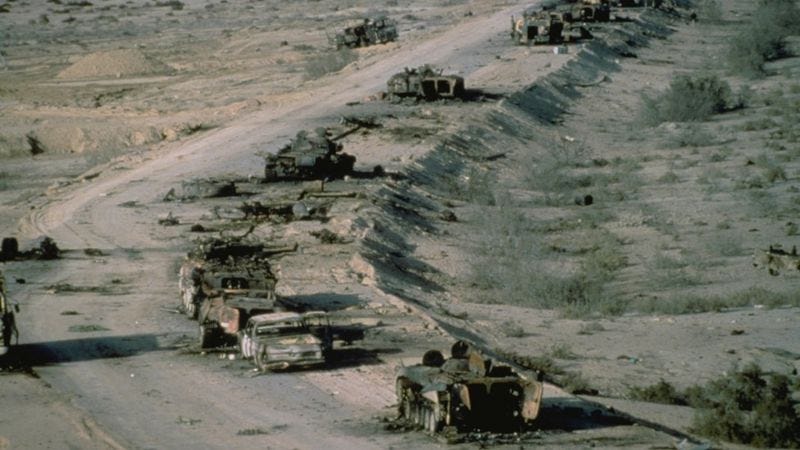
A year after the start of Russia’s full-scale invasion in Ukraine, this war has turned into a confrontation in which neither side is able to plan and conduct an air operation. Russia and Ukraine use planes and helicopters only to support ground forces at the tactical level, fearing flying too far beyond the front line.
For the Ukrainian air force, this is easily explained by the lack of combat aircraft, experienced pilots and ground personnel. But, surprisingly, the Russian air force, much more numerous and better equipped, also appear to be unable to carry out a full-fledged air operation.
This was mostly the result of the Ukrainian anti-aircraft gunners’ tactics since the beginning of the invasion - they actively moved ground systems around and tried to keep their radars turned on less frequently so that they were difficult to be detected and destroyed.
Although the Ukrainian forces were mainly armed with old Soviet air defence systems and radars, they were able to build a layered air defence system of medium and short range.
The system was difficult to overcome at high altitudes, where the planes became victims of the S-300 and Buk missiles, as well as at low altitudes, where they would get intercepted by Western-made portable anti-aircraft launchers.
BBC is blocked in Russia. We’ve attached the story in Russian as a pdf file for readers there.
The lack of experience and inability of the Russian military to suppress enemy air defences were also significant.
Alexander, a commander of a Ukrainian S-300 anti-aircraft missile battalion, told BBC News Ukraine that he did not expect so much recklessness from Russian pilots.
He said that Russian pilots behaved ‘as if Ukraine had no air defence at all.’
“We saw that they were very easy to shoot down,” he said.
To avoid being hit by "large" anti-aircraft missiles, Russian pilots would fly at low altitudes, finding themselves within the reach of numerous portable systems that Western countries had supplied to Ukraine before the war.
Low-altitude flights leave less space for the pilot to manoeuvre and, in case of being shot down, to escape by ejecting from the aircraft.
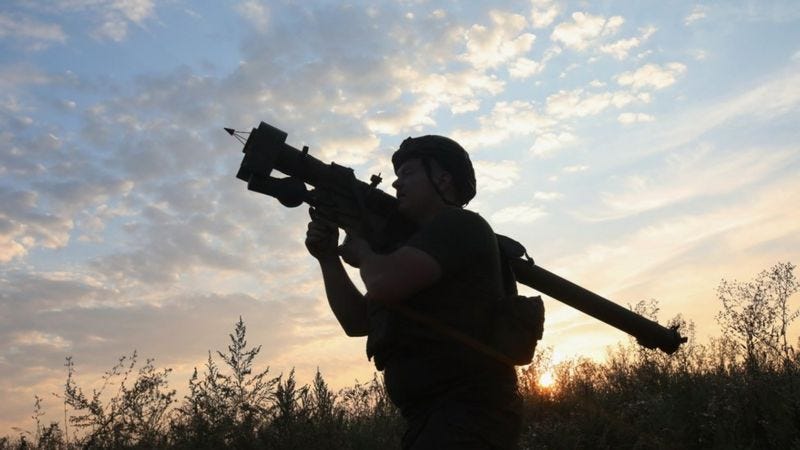
The Ukrainian air force faces the same challenge - the Russian front-line air defence turned out to be too strong an adversary. According to open sources, since the start of the war Ukraine has lost more than 60 aircraft, about half of which were shot down by Russian anti-aircraft systems.
The failures of the Ukrainian air force are not only caused by the lack of aircraft or inexperienced pilots. Russian air defence turned out to be effective enough to "close the sky" over the territory under its control.
This is not surprising, since both armies have their roots in the Soviet military theory, which preferred air defence to be based precisely on ground systems.
Western doctrine is the opposite: air defence is organised around the air force, and trained both to resist an enemy air attack as well as to suppress its ground air defence systems.
Neither Russia nor Ukraine has experience in breaking through ground air defence. For Russia, such an operation is fraught with very high losses, which are considered unacceptable by the Russian air force command: during the year of the war in Ukraine they did not even try to do anything close to that.
But will Ukraine, whose leadership insists on the need to supply Western fighters, be able to plan, prepare and conduct such an operation?
Fighting for the skies
The Ukrainian war quickly became a war of artillery, which, in turn, led to a "shell deficit" on both sides. The shortage can be felt now, as Russian forces are trying to slowly push through the Ukrainian defence lines.
If either side tries to conduct a large-scale offensive, ‘shell hunger’ will become an even greater problem - it will be necessary to break through the enemy defences with artillery fire, utilising a high volume of shells already at a critically low level.
Aerial bombardments can be used instead of artillery fire. But to support the ground offensive from the air, a full-fledged large-scale air operation is needed, including more than a series of strikes against enemy targets on the ground.
For fighter-bombers to be able to destroy enemy strongholds and columns of reserves that will be pulled together to meet advancing Ukrainian troops, to hit Russian frontline headquarters, communication centres and other targets, the air force must work in unison with the advancing ground troops.
But before such an operation starts Ukraine will have to conquer the airspace over the enemy-controlled territory and suppress its air defences. Otherwise, attacking planes will be destroyed by interceptor aircraft and ground-based air defence systems.
These three tasks - ground strikes, air combat and air defence suppression - are incredibly complex and require special pilot training.
Overcoming Russia’s air defence requires the highest level of coordination between several groups of aircraft that perform various tasks: ones distract the enemy, while others conduct electronic warfare and destroy missile systems and radars.
This will require from Ukraine even more complex organisation, management, as well as training for pilots, commanders, and military planners.
The actions of Ukraine’s air force will need to be coordinated with ground forces, planned but also ready to improvise and operate in a constantly changing battle environment. And all this will also depend on the readiness of ground personnel, logistics and much more.
Ukraine’s air force has shown the ability to close its skies to enemy aircraft, also to coordinate between the air and ground assets.
Although the first, defensive scenario for the Ukrainian air force worked out quite well, this does not mean that they can be equally successful with the second, offensive one.
The same is true for the Russian air force, which, however, is in a better position: Russia already has modern fighters, airborne radars, and airfield infrastructure. And Russian air force uses aircraft produced in Russia, which makes them easier to maintain.
But Russian pilots lack experience for such operations. In Syria, there was no enemy air defence, and the war in Ukraine is being waged at the level of tactical strikes against front-line targets only.
A Russian military expert who asked to remain anonymous told me that another big problem is the lack of experienced military commanders.
“In practice, it [this approach to warfare] requires a series of bold organisational decisions and the ability to take responsibility; the question of whether such people in the top echelon of [Russian] command are available remains open. Technically, all the means are there."
What about equipment?
To conduct an air operation, it is necessary to have appropriate weapons and equipment. Modern fighter jets are only a small part of the required resources.
In modern air combat, airborne early warning aircraft (AWACS) usually participate. Often referred to as flying radars, they monitor the airspace and act as command posts that coordinate the action of combat aircraft.
This provides an accurate picture of the airspace in real time for the air operations command centre, making it easier to control the battle.
One of the similar Russian planes was hit by a drone in Belarus in late February.
Ukraine can receive information from a NATO AWACS Boeing E-3 Sentry aircraft, but they do not fly into its airspace remaining in either Poland or Romania.
The range of the E-3 radar is 375.5 kilometres. The shortest distance from the Romanian border to the nearest front line in the Kherson region is about 280 kilometres. What will happen if the air battles start in the north, much further away from the nearest NATO-member country?
Modern air combat is a very complex combination of actions by different groups of fighters. Some start a battle, others attack at a decisive moment, often combat aircraft, as part of an ambush tactics, stay close to the ground and are less visible to radars.
All these tactically complex maneuvres are coordinated from the command post, radars being its ‘eyes’. The higher and closer they are to the place of air combat - the better.
Ukraine has no flying radars in service.
Western doubts
Kyiv has yet to receive a Western response to its requests for modern fighters.
One point of view is that Ukraine does not need to transfer modern fighter jets, but rather focus on getting missiles with a range that would allow it to confidently hit targets deep behind Russian lines.
Jack Reed, head of the US Senate Armed Services Committee and West Point alumni, was quoted as saying that Ukrainian military pilots cannot fully use the old Soviet aircraft they have because of the threat from Russian air defence.
However, Kyiv has its own arguments.
Ukraine is using old Soviet MiG-29s and Su-27s, nearing the end of their lives.
“Today we cannot fight on an equal footing with the aircraft that we have [...] This is obsolete Soviet equipment - morally and physically obsolete.
“It is clear that it works at the limit of its capabilities; we have reached the maximum from it," Yuriy Ignat, a representative of the Air Force of the Armed Forces of Ukraine, said in an interview with the BBC.
The tactics of the Ukrainian air defence that prevent Russian aircraft to fly far behind the front line include the use of ground systems, and aviation, which operates in conjunction with the air defence system.
When Ukrainian aircraft resources are exhausted, it will become easier for Russian fighters and bombers to hit Ukrainian air defence.
Western fighters will also allow Ukraine to be more efficient in intercepting cruise missiles and loitering munitions that the Russian army fires at the country's territory, Ignat added.
Also, they can carry more modern weapons, in particular the F-16. The Ukrainians already use the AGM-88 HARM anti-radar missile - they have managed to adapt it to be launched from their MiGs. These missiles lock on to the radar signal, and is used to combat anti-aircraft missile systems.
Ignat said that the appearance of fighters with such missiles will force Russian operators to turn off their radars, which, in turn, will make it possible for Ukraine to strike ground targets.
If Ukraine receives the F-16, it will be able to use another long-range missile - the AIM-120 AMRAAM with a range of more than 160 kilometres.
The latest modifications of this American fighter are equipped with a modern digital fire control system, a powerful radar that allows further view and use of long-range missiles.
F-16s will be able to fight Russian aircraft that use guided bombs. Such ammunition can be dropped dozens of kilometres away from the target without entering the air defence coverage area. Recently, Russian aviation has been actively using such bombs near Avdiivka.
Finally, the F-16 can carry many different bombs and missiles, including naval ones, which will allow it not to enter the Russian air defence zone, avoiding risk of being shot down.
But these reasonable arguments for handing over Western fighters to Ukraine are not enough to prove such a move would make a decisive turning point in the war over skies. The Armed Forces of Ukraine have managed to resist the latest Russian Su-30s and Su-35s using very old and more primitive MiG-29s.
The new planes will make Ukrainian aviation more efficient at the tactical level and strengthen the country's air defence. But does Ukraine have plans for decisive raids and large-scale operations, and will they have planes and pilots to operate the new planes?
Where to get pilots?
Contrary to press reports of flight personnel being trained abroad, Ukrainian officials claim the pilots are not yet being trained.
Yuri Ignat says that Ukraine’s Armed Forces have already selected the first group of a "few dozen" pilots who are now ready to go to the United States for further training.
He said that non-flying Air Force specialists are already being trained abroad.
“Ukrainian military personnel are being trained all over Europe… Tens of thousands of people were accepted by Spain, France, Italy, Great Britain and Germany, in particular, Air Force personnel,” he said.
Among them are also those trained to operate air defence systems, he said, like “combat control officers."
However, Ukraine may not have enough experienced pilots. And even if battle-tested pilots learn to fly Western planes, it is still difficult to re-train for a new type of aircraft, and to learn flying it in combat is even more resource and time consuming.
Ignat does not exclude the possibility of attracting foreign volunteer-pilots with combat experience.
"Why not? Both the pilots and the technical staff. If they express a desire to take the side of the good force - they can do it according to the established procedure, I think that this is not a problem," he told the BBC.
Whether, when and how many military pilots trained in the West Ukraine can get is unknown. This information is so classified that, based on data from open sources, dozens of combat-ready pilots might appear in Ukraine in the coming months, or not.
However, Ukraine's Armed Forces have already shown that they can come up with most unexpected plans to confuse the enemy.
Additional reporting by Vitaliy Chervonenko, BBC News Ukraine.
Read the full story in Russian here.

